Lisbon - in the distant past, the capital of a powerful maritime empire that gave the world the great Vasco da Gama and Ferdinand Magellan, and now a picturesque and atmospheric city that still keeps the memory of its former greatness. The year 1755 became a dramatic and turning point in the history of Lisbon, when a powerful earthquake destroyed it almost to the very foundation. But, despite the fact that medieval architecture and many priceless monuments have been lost, the restored Lisbon of the 18th-19th centuries is of great interest to tourists.
The capital of Portugal keeps the treasures of the Jerónimos Monastery and the Ajuda Palace, spreads the quaint streets of the Alfama and Baixa quarters and flaunts grandiose suspension bridges. The historical heritage of the city is priceless, so a wide field for research opens up here for tourists.
What to see and where to go in Lisbon?
The most interesting and beautiful places for walking. Photos and a short description.
- Praça do Comercio
- Augusta street
- Rossio Square
- Alfama area
- Belem Tower
- Queluz Palace
- Castle of Saint George
- Ajuda Palace
- Belen Palace
- Monastery of Jeronimos
- Carmelite monastery
- Monastery of San Vicente de Fora
- Basilica da Estrela
- Church of St. Roch
- Cathedral of Lisbon
- Church of Saint Engracia
- Calouste Gulbenkian Museum
- National Museum of Ancient Art
- National Carriage Museum
- Electricity Museum
- Maritime Museum
- Lisbon zoo
- Lisbon Oceanarium
- Elevador di Santa Justa
- Monument to the discoverers
- Aqueduct Aguas Librish
- April 25 Bridge
- Vasco da Gama bridge
- Yellow Lisbon tram
- Observation decks
Praça do Comercio
The square is considered one of the most beautiful in Europe. It is located on the banks of the river, where the Ribeira Palace used to be, destroyed by an earthquake (which is why the second name of the place is Palace Square). Centuries ago, Praça do Comercio was the front gate of Lisbon. Ships with riches taken from the Portuguese colonies moored here, and royal delegations arrived. Majestic monuments and austere administrative buildings testify to the former glory.
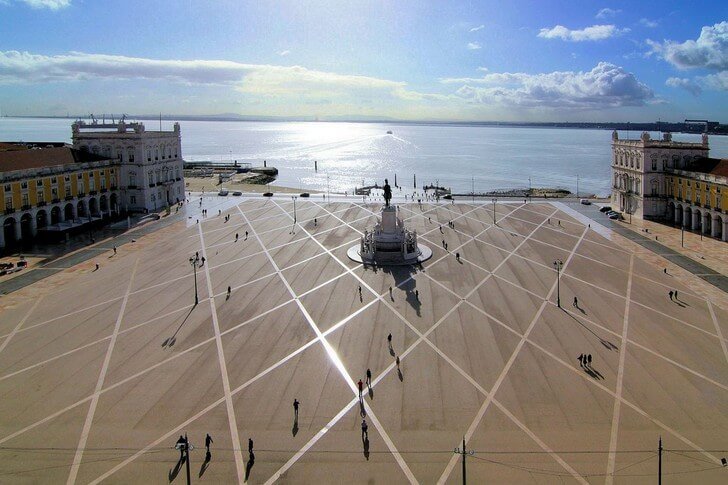
Address: Praça do Comercio, Lisbon, Portugal
Opening hours: 00:00 - 24:00
Augusta street
The central pedestrian boulevard of Lisbon is full of tourists and locals at any time of the year. It stretches from Rossio Square to the triumphal arch. The street is full of unusual atmospheric cafes and shops. The pavement of Augusta Street is laid out by hand, on which the original ornament is woven into a bizarre pattern. The place was named after the Portuguese taxi driver August Macedo, who drove passengers around Lisbon for almost 70 years.
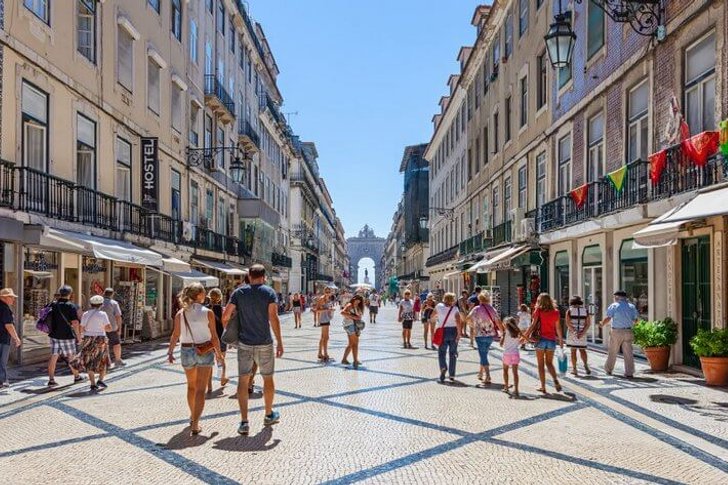
Address: Augusta street, Lisbon, Portugal
Opening hours: 10:00 - 20:00
Rossio Square
The square arose on the site of the ancient Roman hippodrome, its history goes back hundreds of years. The square is located in the Baixa area, one of the most colorful and interesting places in Lisbon. Until 1755, it was surrounded by luxurious buildings in the Manueline style, as the whole city was bathed in luxury thanks to the fabulous wealth of the Portuguese colonies. After the earthquake, the entire district and square were rebuilt.
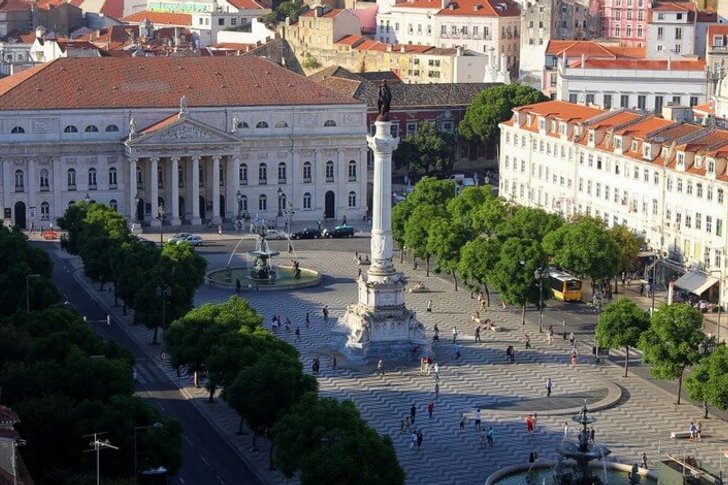
Address: Rossio Square, Lisbon, Portugal
Opening hours: Open 24 hours
Alfama area
Almafa is the only urban area of which at least something remains after the earthquake of 1755. Its architecture with chaotically arranged streets corresponds to the idea of medieval cities. The area is located on a hill, people move along it with the help of numerous stairs. Cars can hardly pass between the old houses with shabby walls, but there is a place for tram lines.
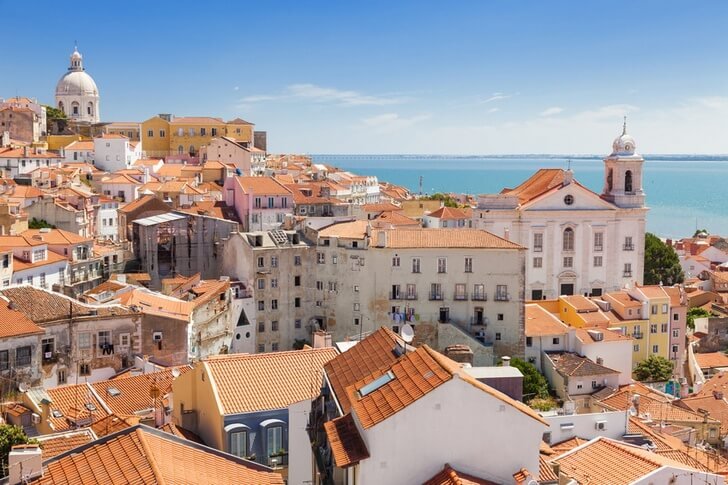
Address: Alfama area, Lisbon, Portugal
Opening hours: 09:00 - 22:00
Belem Tower
An architectural monument of the 16th century, listed by UNESCO. The tower was erected in honor of Vasco da Gama's discovery of the way to India, at different times it housed: a defensive fort, a powder warehouse, a prison, a customs office. The building was built in the unique Portuguese Manueline style, which was almost lost by the 19th century. The facade and interior of the tower are decorated with priceless monuments from the Age of Discovery.
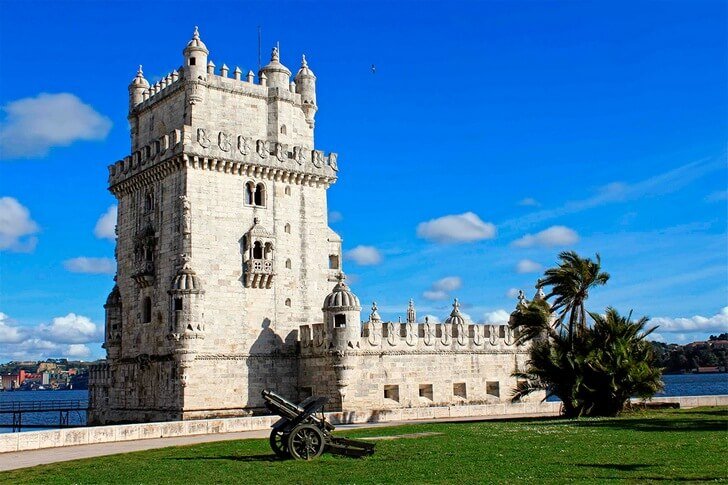
Address: Belem Tower, Lisbon, Portugal
Phone: +351 21 363 7500
Opening hours: 10:00 - 17:30
Queluz Palace
The palace was built in the 17th century in the Rococo style. It served as the summer residence of the Portuguese king Pedro II. The building was later used to house dignitaries. Nowadays, classical music concerts are held on the territory of the palace. Particular attention is drawn to the luxurious Throne and Musical Halls, as well as the magnificent and lavishly decorated royal chambers.

Address: Queluz Palace, Lisbon, Portugal
Phone: +351 21 923 7300
Opening hours: 9:00 - 18:00
Castle of Saint George
The castle originated in the 5th century AD. on the site of a Roman fortification, for one and a half thousand years of its existence, it was repeatedly rebuilt. In the XII century, it housed the residence of the Moorish ruler. Until the 16th century, Portuguese monarchs lived in the castle. In 1755, the building was destroyed by an earthquake to the very foundation. Recovery took place only in the first half of the 20th century.

Address: Castle of Saint George, Lisbon, Portugal
Phone: +351 218 800 620
Opening hours: 09:00 - 21:00
Ajuda Palace
Neoclassical building from the first half of the 19th century, built for Luís I and his wife. Previously, an earlier royal residence of the 15th-16th centuries was located on the site of Ajud, but it was destroyed during an earthquake. Palace rooms and halls are elegantly and luxuriously furnished, wide halls and passages are decorated with sculptures, paintings and tapestries of great cultural value.
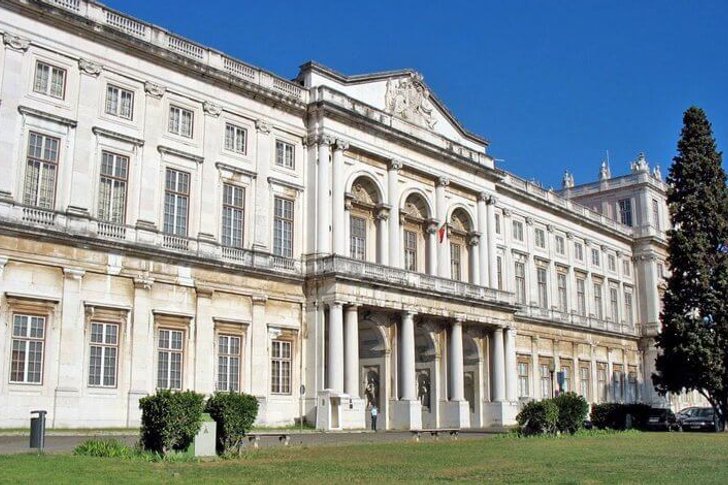
Address: Ajuda Palace, Lisbon, Portugal
Phone: +351 21 365 8180
Opening hours: 10:00 - 18:00
Belen Palace
Residence of the Portuguese President, located in the Belém area. Earlier during the monarchy, the rulers of Portugal stayed here. The palace was erected in the middle of the 16th century and rebuilt in the 18th century. The predominant architectural styles of the complex are Baroque and Mannerism. The façade is decorated with Portuguese azulejo tiles depicting mythological heroes and epic scenes.
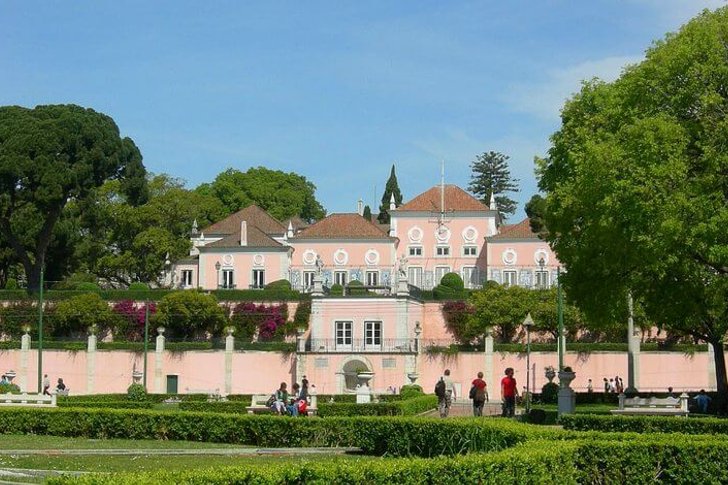
Address: Belen Palace, Lisbon, Portugal
Phone: +351 21 361 2700
Opening hours: Monday to Sunday: 10:00 - 17:00
Monastery of Jeronimos
One of the key attractions of Portugal, recognized as a national monument at the very beginning of the 20th century. Since 1983 it has been included in the UNESCO heritage list. The remains of the great navigator Vasco da Gama lie in the monastery. The monastery was built by the end of the 16th century on the income received from the newly discovered lands. The history of Jeronimos is closely associated with the grandiose period of the Great Geographical Discoveries and the power of Portugal.
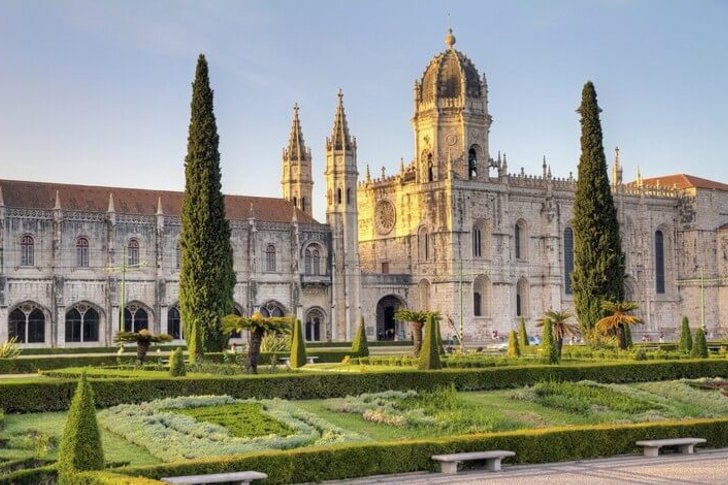
Address: Monastery of Jeronimos, Lisbon, Portugal
Phone: +351 21 362 0034
Opening hours: 10:00 - 17:30
Carmelite monastery
Medieval monastery of the XIII-XIV centuries, built by the aristocrat Nuno Alvares Pereira for the brothers of the Carmelite order. This noble knight sold all his possessions and cut his hair as a monk. In 1755, as a result of an earthquake, the building was destroyed and many priceless relics were lost. After restoration, the complex was used as a warehouse and barracks, and later an archaeological museum was placed within the walls.
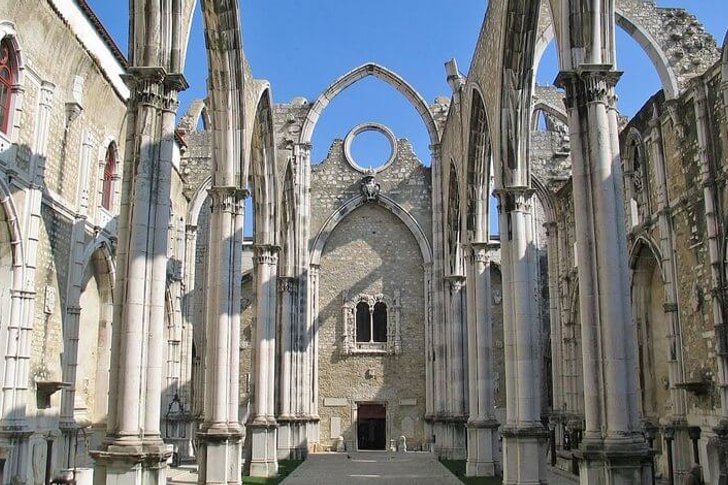
Address: Carmelite monastery, Lisbon, Portugal
Opening hours: 09:00 - 18:00
Monastery of San Vicente de Fora
The complex was built in the XVI-XVII centuries. on the site of the church of St. Vincent - the patron saint of Lisbon. The monastery is one of the most revered in Portugal, for some time the residence of the city archbishop was located here. The monastery was built in the late Renaissance style. Its walls are richly decorated with mosaics depicting battle scenes, and the façade is decorated with azulejo mosaics. On the territory of San Vicente de Fora is the tomb of the Braganza dynasty.
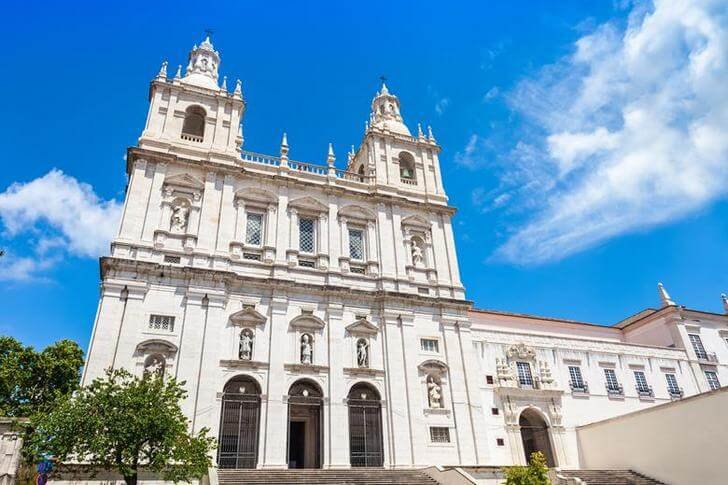
Address: Monastery of San Vicente de Fora, Lisbon, Portugal
Phone: +351 218 860 400
Opening hours: 9:00 - 17:00
Basilica da Estrela
A church built by order of Queen Mary, who was grateful to Heaven for the appearance of a long-awaited heir. The basilica is considered one of the most picturesque temples in Lisbon. It was built in the Baroque style with neoclassical elements. The temple began to be erected after the Lisbon earthquake (the queen was late with the fulfillment of the promise, since at that moment her son José was already 18 years old).
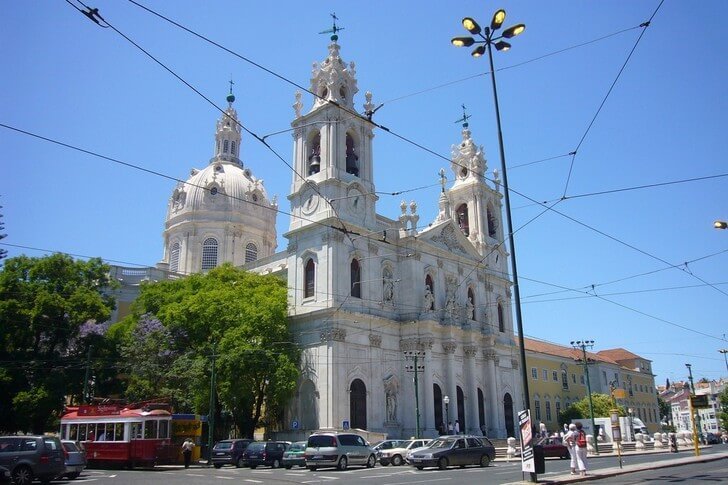
Address: Basilica da Estrela, Lisbon, Portugal
Phone: +351 21 397 3653
Opening hours: 09:00 - 19:00
Church of St. Roch
Jesuit Church, one of the oldest temples of this order. It was erected on the site of a cemetery in the 16th century. The temple was named in honor of St. Roch - the patron saint of the sick. The interior is splendid, and King João V took part in its creation. The walls are decorated with skillful frescoes by famous Portuguese painters, many decoration elements are made of marble and decorated with gilding.
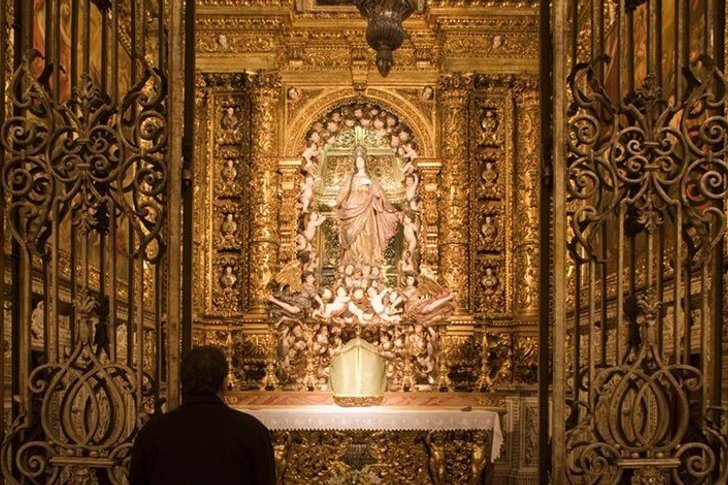
Address: Church of St. Roch, Lisbon, Portugal
Phone: +351 21 346 3210
Opening hours: 09:00 - 17:00
Cathedral of Lisbon
The main cathedral of Lisbon, which arose in the era of the Early Middle Ages. It is believed that a Roman temple stood in its place, which the Visigoths turned into a Christian church. During the period of Arab rule on the Iberian Peninsula, the temple was destroyed, and a mosque was erected in its place. In 1150, a new building appeared, which stood for six centuries before the earthquake. However, the cathedral was not completely destroyed by the elements, it was reconstructed, diluting the strict Romanesque architecture with Gothic, Baroque and Neoclassicism.
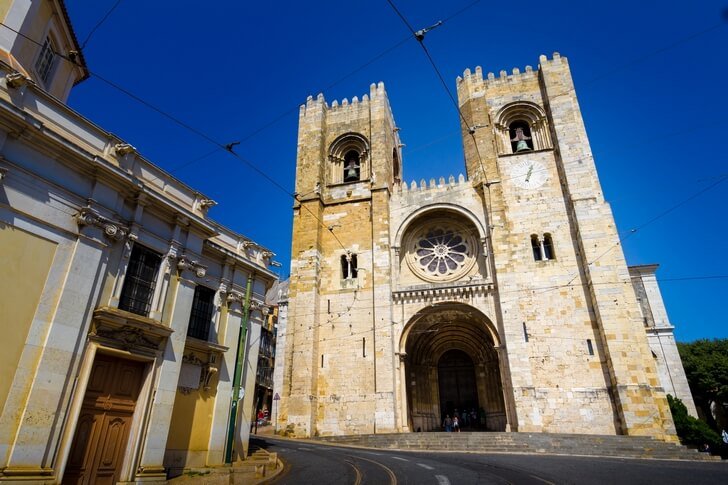
Address: Cathedral of Lisbon, Lisbon, Portugal
Phone: +351 218 320 340
Opening hours: 10:00 - 17:00
Church of Saint Engracia
A majestic and monumental building made of pink marble in the Portuguese Baroque style, which has a second name - the National Pantheon of Portugal. The church began to be erected in the 17th century, and completed only in the 20th. The role of the pantheon went to the temple under the dictator A. Salazar. Political figures, famous writers and other representatives of culture are buried in the church.

Address: Church of Saint Engracia, Lisbon, Portugal
Opening hours: 9:00 - 17:00
Calouste Gulbenkian Museum
Art gallery, where samples of European, antique and oriental art are collected. The museum was organized at the expense of the Armenian magnate G. Gulbenkian in 1969, who emigrated to Portugal after World War II. The museum exhibits a large collection of paintings, jewelry, sculpture and applied arts. Here you can look at the works of Rembrandt, Manet, Degas, Rubens and Renoir.
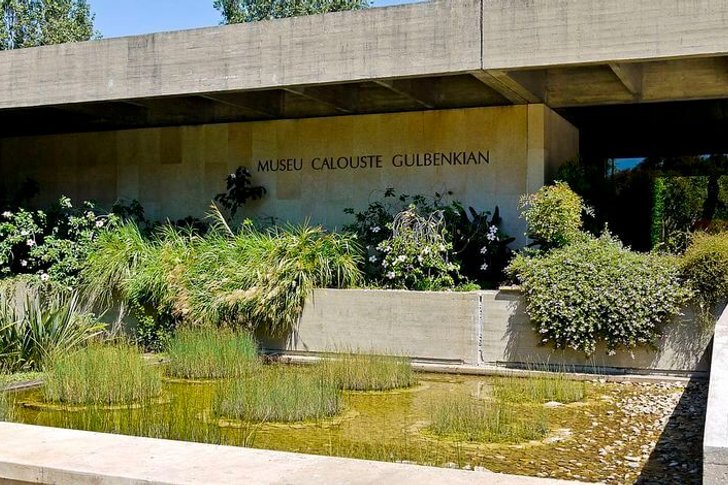
Address: Calouste Gulbenkian Museum, Lisbon, Portugal
Phone: +351 217 823 000
Opening hours: 10:00 - 18:00
National Museum of Ancient Art
The collection was created on the basis of works of art confiscated from monastic orders. These religious associations were dissolved at the beginning of the 19th century, and part of their wealth fell into the hands of the state. The museum exhibits works by Portuguese masters of the 14th-19th centuries, paintings by European artists, collections of sculpture and ceramics, textiles, furniture and other decor items.
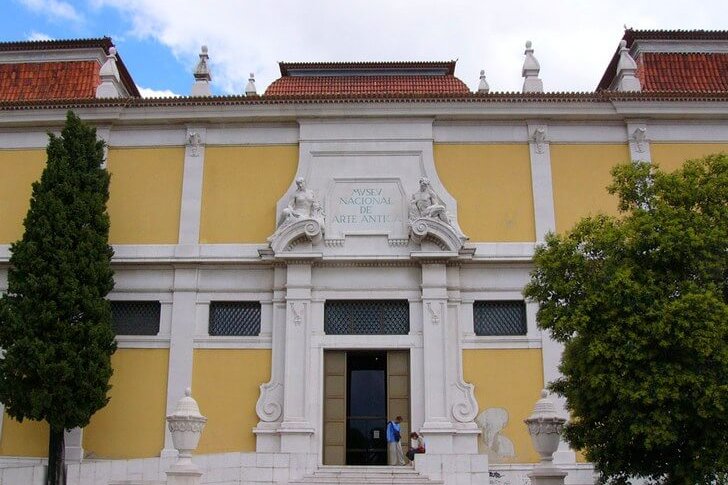
Address: National Museum of Ancient Art, Lisbon, Portugal
Phone: +351 21 391 2800
Opening hours: 10:00 - 18:00
National Carriage Museum
A museum that houses a collection of the royal family's carriages. It was created with the participation of the last queen of Portugal, Amelia, as she wanted to keep the carriages and show them to the general public. Subsequently, the collection was replenished with copies from France, Austria, Italy and other European countries. In the museum you can see carriages of the 17th-19th centuries. In 2015, a new modern building was built for the exposition.
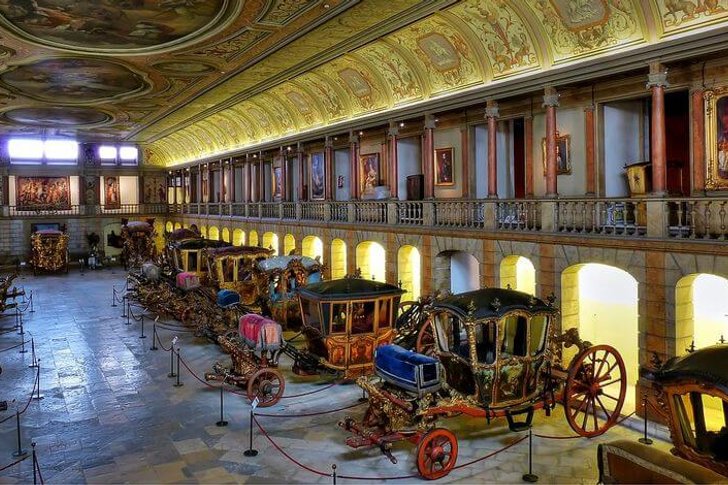
Address: National Carriage Museum, Lisbon, Portugal
Phone: +351 21 361 1024
Opening hours: 10:00 - 18:00
Electricity Museum
The museum is located in the building of a former power plant, which regularly supplied electricity to the city for several decades. The building is a rare and interesting example of Portuguese industrial architecture, which mixed Art Nouveau and Classicism. In the museum, the visitor can look at the equipment, observe the processes of electricity production or listen to an informative lecture.
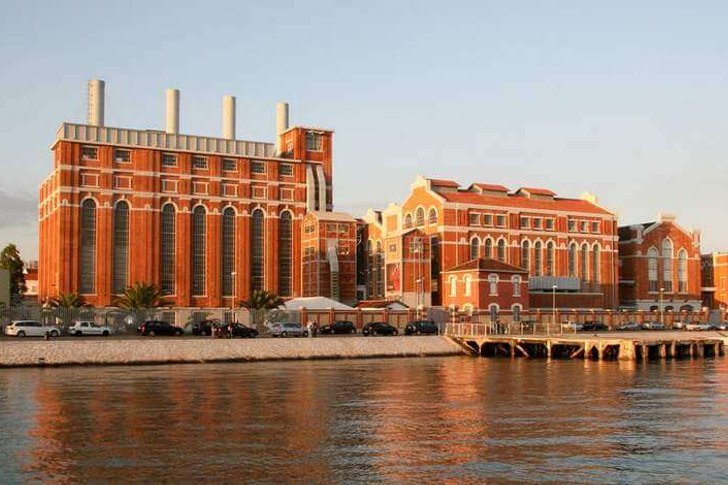
Address: Electricity Museum, Lisbon, Portugal
Opening hours: Tuesday to Sunday: 10:00 - 18:00
Maritime Museum
The exposition is located on the territory of the Jeronimos Monastery. In the distant past, Portugal was a great maritime empire, numerous colonies all over the world were subordinate to it. Museum exhibits remind the visitor of those glorious times. The halls display various models of ships, maps, navigational instruments used by the Portuguese explorers in their travels.
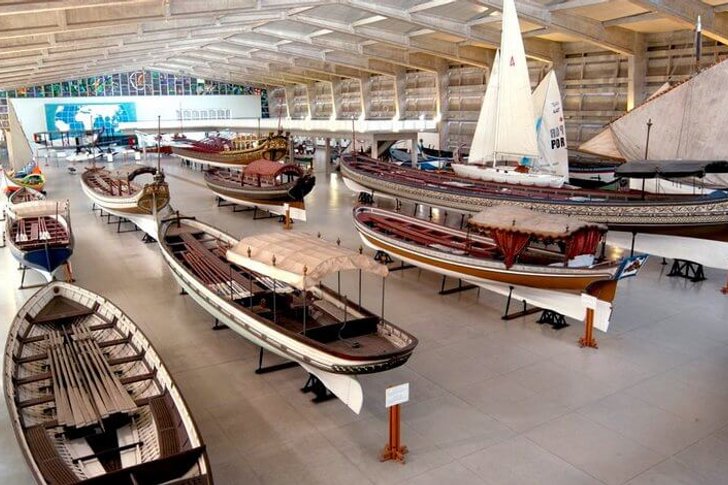
Address: Maritime Museum, Lisbon, Portugal
Phone: +351 21 361 24 30
Opening hours: 10:00 - 18:00
lisbon zoo
The city zoo is located in a very picturesque area, decorated with architectural monuments. It is home to about 300 species of animals, mainly felines, primates and animals imported from the colonial possessions of Portugal. The zoo proclaims the conservation and revival of rare and endangered species as the main goal of its existence. Some animals in the zoo are adapted for release into the wild.
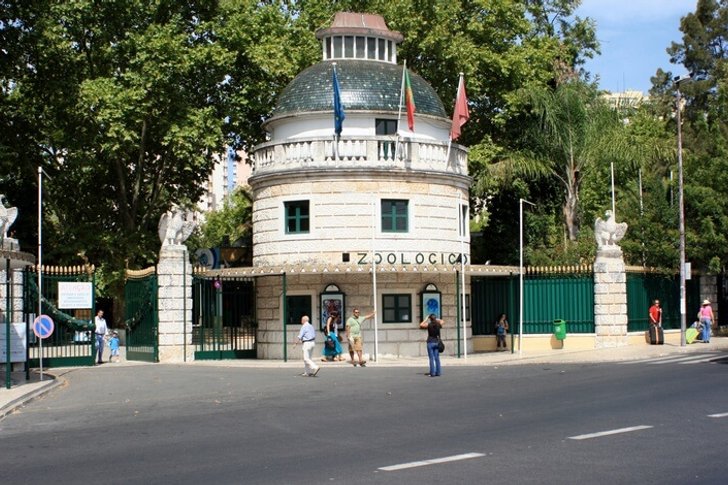
Address: Lisbon zoo, Lisbon, Portugal
Phone: +351 21 315 1500
Opening hours: 10:00 - 18:00
Lisbon Oceanarium
The oceanarium is considered the largest in Europe, it is home to more than 450 species of marine life (16 thousand individuals). The main aquarium covers an area of 1,000 m² and reaches a depth of 7 meters. The aquarium contains quite rare marine species: moon fish, sea beaver, crab spider and others. The inhabitants of the Atlantic, Indian and Pacific oceans live in separate aquariums.
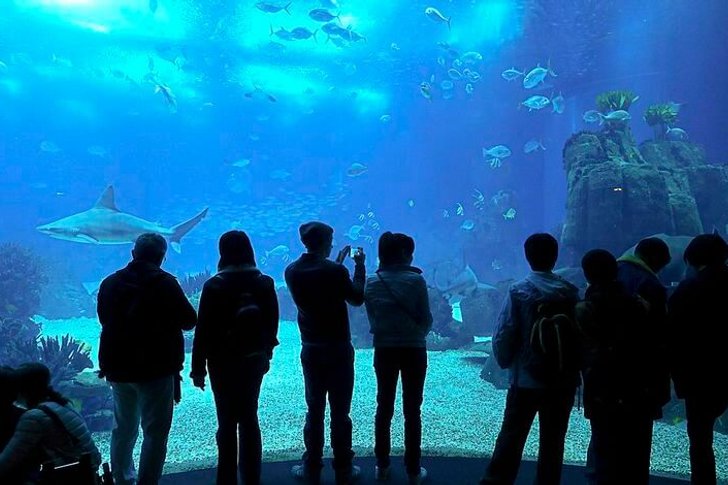
Address: Lisbon Oceanarium, Lisbon, Portugal
Phone: +351 21 891 7000
Opening hours: 10:00 - 20:00
Elevador di Santa Justa
City lift connecting Rua do Ouro and Largo do Carmo. It was built at the beginning of the 20th century to help pedestrians who had to overcome a steep enough slope to get from the Baixa area to the Chiado area. The elevator is designed in an elegant neo-gothic style. At first he moved with the help of steam engines, later they were replaced by electric ones. The elevator is a popular tourist attraction.
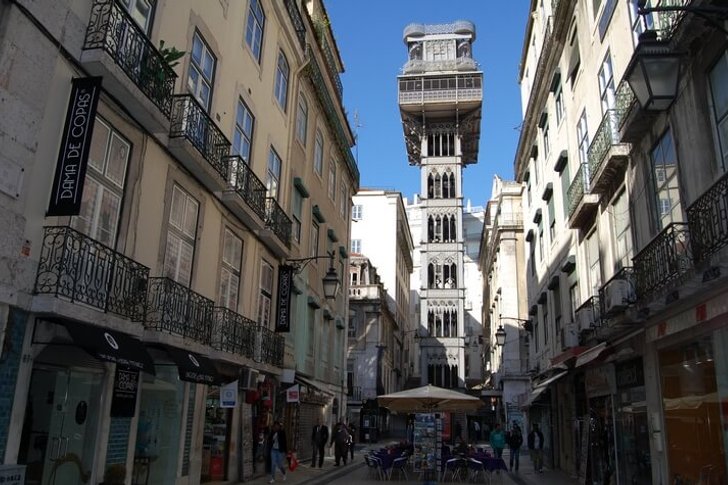
Address: Elevador di Santa Justa, Lisbon, Portugal
Phone: +351 218 879 196
Opening hours: 09:00 - 21:00
Monument to the discoverers
A monument erected in honor of the figures of the era of the great geographical discoveries. This imposing monument was built during the reign of the dictator Salazar. It is distinguished by its majestic style and huge size; the monument reaches a height of 50 meters. In this way, the architect wanted to emphasize the importance of the discoveries made by the Portuguese navigators. At the top of the monument is a panoramic observation deck.

Address: Monument to the discoverers, Lisbon, Portugal
Phone: +351 21 362 0000
Opening hours: 10:00 - 17:00
Aqueduct Aguas Librish
The aqueduct was built in the first half of the 17th century and survived the earthquake of 1755. It is still included in the city's current water supply system. The arches of the aqueduct reach a height of 60 meters. Until the middle of the 19th century, it was possible to walk on it, but it was decided to close the passage due to frequent suicides. Nowadays, you can take a tour of the aqueduct as part of an organized group.
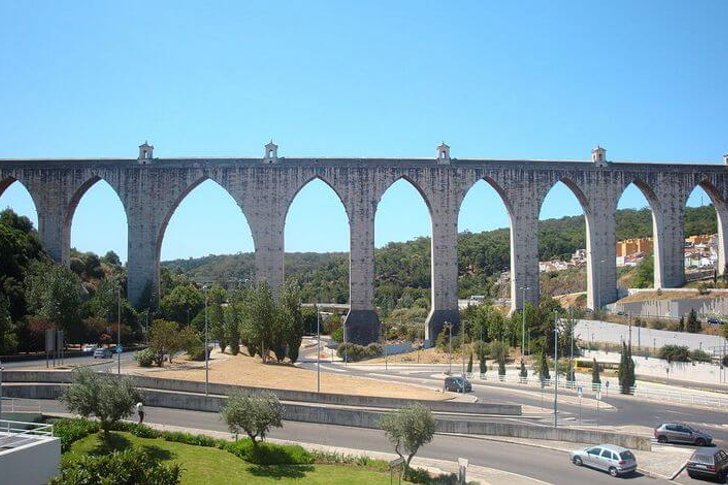
Address: Aqueduct Aguas Librish, Lisbon, Portugal
Opening hours: 09:00 - 18:00
April 25 Bridge
Iron suspension bridge of the 60s. XX century, thrown across the Tagus River and connecting two urban districts. In length, the structure stretched for 2.22 km. It is considered one of the longest suspension bridges in the world. Until 1974, the structure was named after António Salazar, but after the Red Carnation Revolution on April 25, it was renamed in honor of this significant day for Portugal.
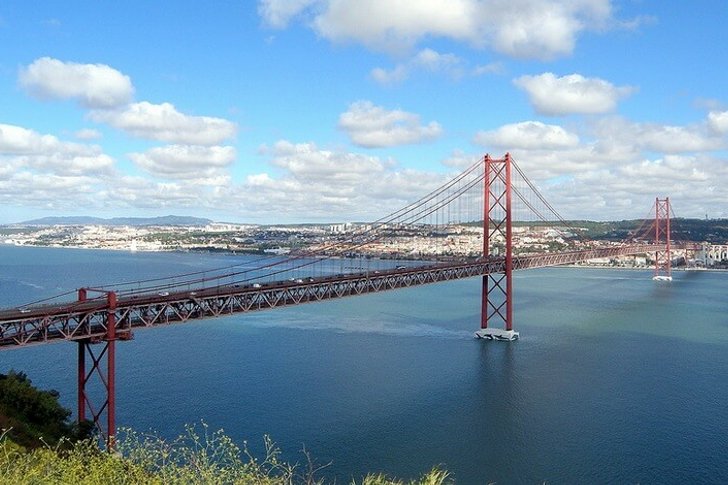
Address: April 25 Bridge, Lisbon, Portugal
Opening hours: 09:00 - 18:00
Vasco da Gama bridge
The most impressive and longest European bridge over the Tagus River, stretching for 17 km. The grand structure was built in just 3 years, despite the incredible scale of the project. The bridge was launched on March 29, 1998. This date was not chosen by chance, since it was in 1498 that Vasco da Gama set sail along the sea route from Europe to India. The bridge was built at the expense of the private company Lusoponte.
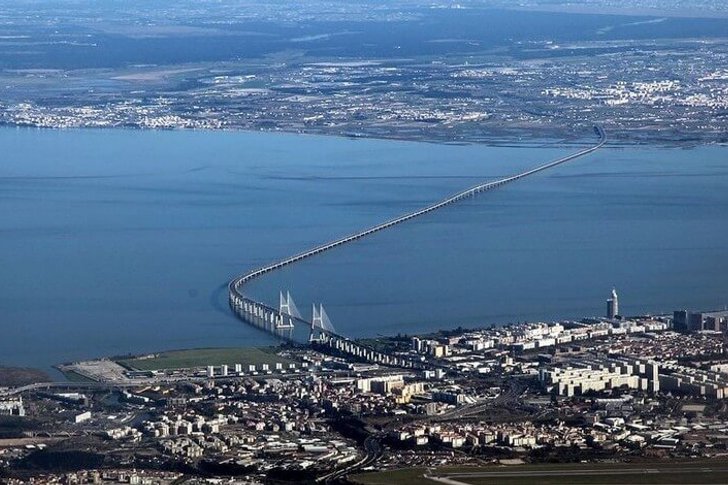
Address: Vasco da Gama bridge, Lisbon, Portugal
Phone: +351 21 380 3000
Opening hours: 00:00 - 23:59
Yellow Lisbon tram
The narrow and uneven streets of central Lisbon are lined with tram routes that have been in service for over a hundred years. The famous yellow trams belong to the Lisbon tram network. Route number 28 is especially popular. It passes through all the historical districts of the city, makes many sharp turns and visits very picturesque places. Tram number 28 is constantly clogged with tourists, as many prefer to get to know the city through a trip.
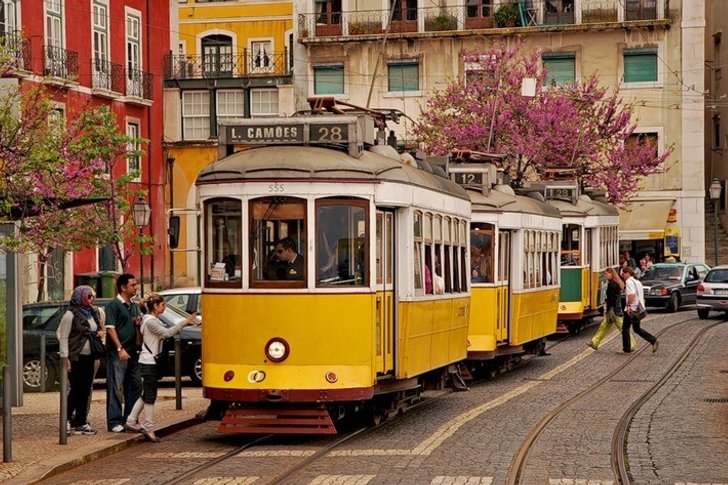
Address: Yellow Lisbon tram, Lisbon, Portugal
Opening hours: 07:00 - 23:00
observation decks
Lisbon is spread out on the hills, often in order to get from one area of the city to another it is necessary to make remarkable physical efforts and overcome many stairs and slopes. Scattered throughout the city are observation decks offering magnificent views of Lisbon, the Tagus River, suspension bridges, and the ocean coast. The best sites are considered to be Santa Lucia, Señora do Monte, Graça, the Gate of the Sun, as well as the one located on Cape Roca.
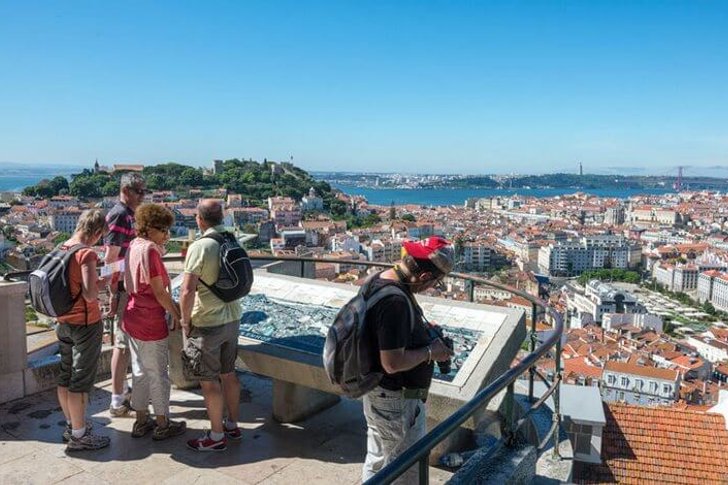
Address: Observation decks, Lisbon, Portugal
Opening hours: 09:00 - 21:00
